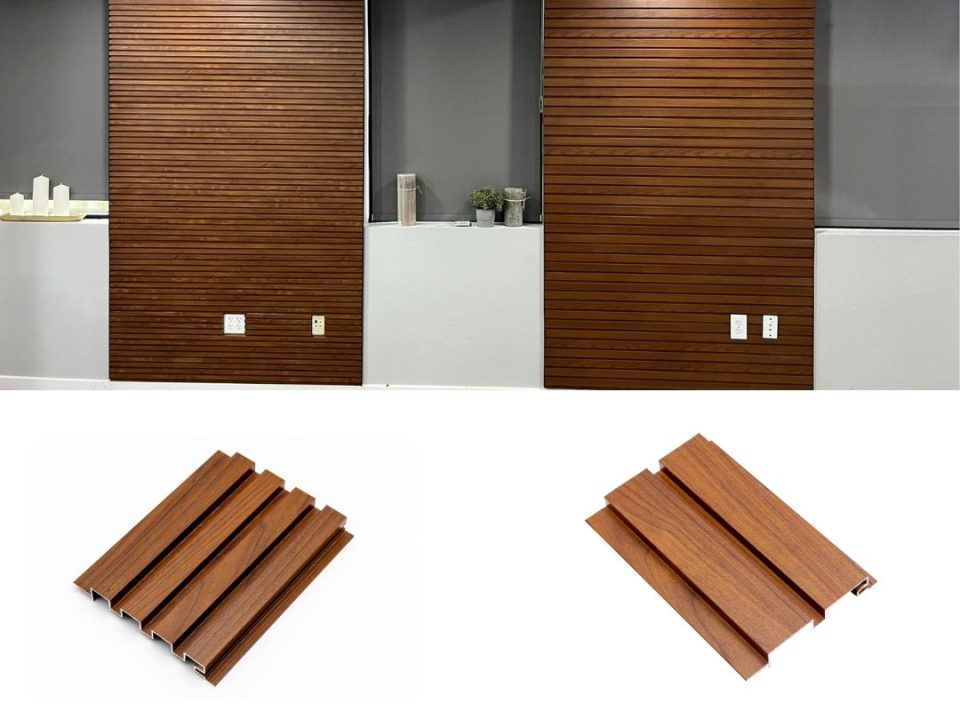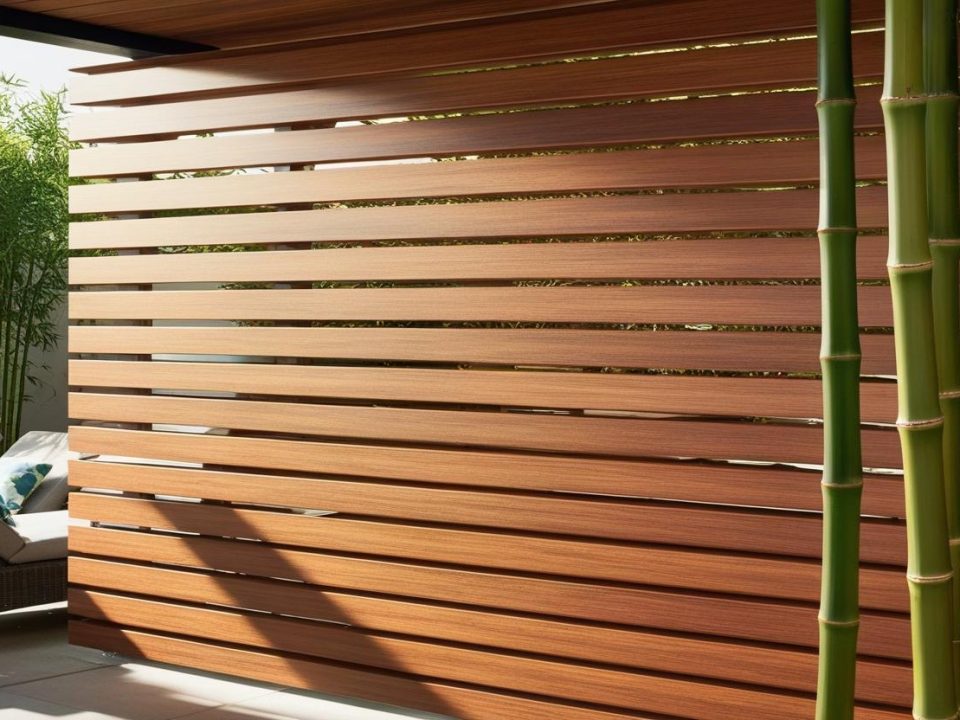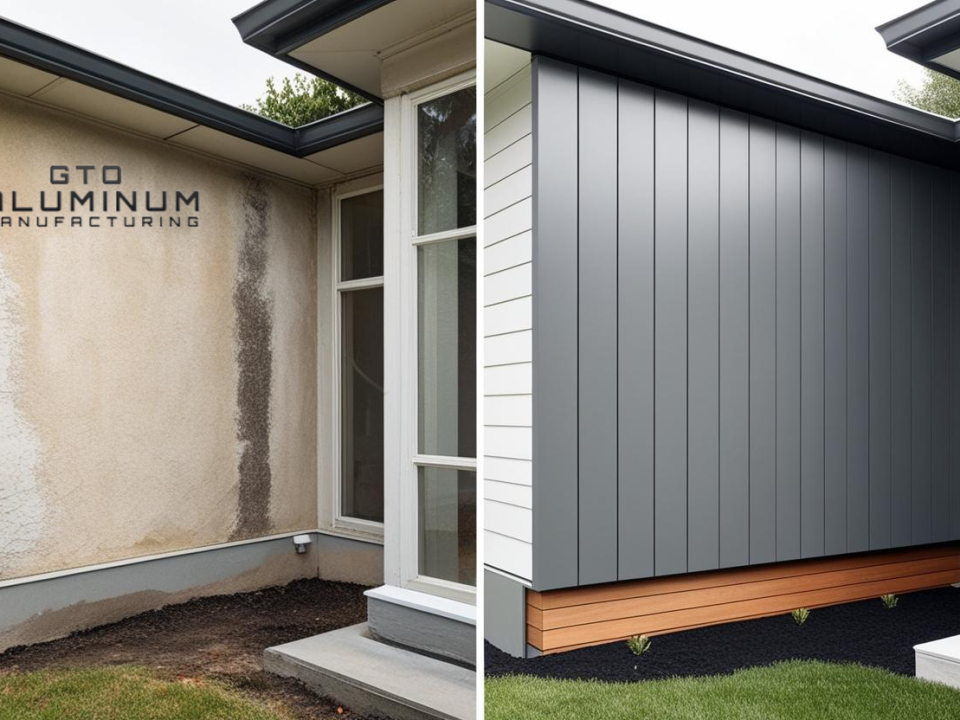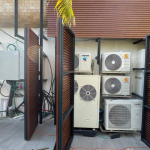
Thermal Breaks in Aluminum Cladding: Importance and Benefits
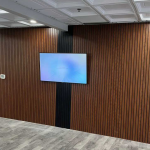
How Aluminum Cladding Reduces Overall Expenses

Looking to transform your next architectural project with a material that combines beauty, durability, and sustainability? Discover how anodized aluminum cladding can elevate your design to new heights!
In the realm of modern architecture and design, materials play a pivotal role in shaping the aesthetics, durability, and sustainability of buildings.
Among the myriad options available, anodized aluminum stands out as a superior choice for cladding, offering a unique combination of beauty, resilience, and eco-friendliness.
This blog post delves into the myriad advantages of anodized aluminum cladding, exploring why it has become a favorite among architects and builders across the globe.
Aesthetic Appeal of Anodized Aluminum Cladding
Anodized aluminum cladding is not just about protection; it’s a statement of style and sophistication.
The anodizing process allows aluminum to retain its natural metallic sheen while offering a wide range of color options.
This versatility means that anodized aluminum can be tailored to suit any architectural vision, from sleek, contemporary facades.
Beyond colors, the finish of anodized aluminum is uniquely consistent and uniform.
It ensures that every panel contributes to a cohesive and elegant overall look.
This uniformity is difficult to achieve with painted surfaces, which can vary in texture and color.
Durability
Durability is a cornerstone of anodized aluminum cladding.
The anodizing process, which electrochemically converts the aluminum surface into a durable, corrosion-resistant, anodic oxide finish, significantly enhances the metal’s natural resilience.
This finish is not applied to the surface like paint or coating but is fully integrated with the underlying aluminum.
This makes it exceptionally resistant to peeling, chipping, and flaking.
Moreover, anodized aluminum is known for its ability to withstand harsh environmental conditions.
This means buildings clad in anodized aluminum retain their pristine condition for decades, with minimal need for maintenance or refurbishment.
Sustainability of Anodized Aluminum Cladding
In today’s construction industry, sustainability is not just a buzzword but a critical consideration in material selection.
Anodized aluminum cladding shines in this aspect as well.
The anodizing process is environmentally friendly, requiring fewer resources and producing less waste than traditional coating processes.
The energy efficiency of buildings is also enhanced with anodized aluminum cladding.
This makes anodized aluminum an excellent choice for projects aiming for green building certifications like LEED.
Maintenance Made Easy of Anodized Aluminum Cladding
One of the most compelling advantages of aluminum cladding is its low maintenance requirements.
Unlike painted or coated materials, which may require regular upkeep to maintain their appearance and integrity, anodized aluminum needs only occasional cleaning with water and mild detergent to look its best.
This ease of maintenance not only saves time and resources but also eliminates the need for harsh chemicals or repaintings, further emphasizing its eco-friendly advantage.
This low maintenance aspect is particularly beneficial in urban environments or coastal areas.
Where pollutants and salt spray can quickly degrade less resilient materials.
Anodized aluminum’s ability to resist these environmental stresses ensures that buildings remain visually appealing and structurally sound with minimal upkeep.
Fire Resistance for Safety
Safety in building materials is paramount, and aluminum cladding offers excellent fire resistance.
Aluminum naturally has a high melting point, and the anodizing process does not diminish this property.
Unlike some cladding materials that can contribute to the spread of fire, anodized aluminum does not burn or emit toxic fumes when exposed to high temperatures.
The added safety feature, coupled with its other advantages, underscores anodized aluminum’s suitability for a wide range of architectural applications.
The Thermal Performance Advantage
Anodized aluminum cladding can also play a role in enhancing the thermal performance of buildings.
While aluminum itself is a heat conductor, when used in conjunction with thermal breaks and insulation, aluminum cladding systems can significantly reduce heat gain and loss.
This improved thermal efficiency contributes to a more stable indoor temperature, reducing the reliance on heating and cooling systems and lowering energy costs.
Moreover, the reflective qualities of certain finishes of anodized aluminum can further improve energy efficiency by reflecting solar radiation, keeping buildings cooler in hot climates.
This thermal performance is a key factor in creating comfortable, sustainable living and working environments.
Versatility in Application
The versatility of aluminum cladding extends beyond its appearance and physical properties.
It can be used in a variety of architectural applications, from exterior facades to interior panels, and even in decorative features.
Its lightweight nature makes it easy to install and suitable for both new constructions and retrofit projects.
Anodized aluminum can also be fabricated into a wide range of shapes and sizes, allowing for custom designs.
Whether it’s intricate patterns for aesthetic detailing or large, seamless panels for a minimalist look, anodized aluminum provides the flexibility needed to bring these concepts to life.
Enhancing Structural Integrity of Anodized Aluminum Cladding
The strength-to-weight ratio of anodized aluminum is another factor that contributes to its widespread use in cladding systems.
Despite being lightweight, anodized aluminum offers significant structural strength, adding durability without placing excessive load on the building’s framework.
This aspect is particularly advantageous in regions prone to seismic activity, where reducing the weight of the building can help improve its earthquake resilience.
Furthermore, the rigidity of anodized aluminum panels can help protect buildings from external impacts and wear, ensuring that the structural integrity is maintained over time.
This blend of lightweight and strength makes anodized aluminum an ideal choice for both aesthetic and protective cladding.
Cost-Effectiveness Over Time
While the initial investment in anodized aluminum cladding may be higher compared to some other materials, its long-term cost-effectiveness is undeniable.
The durability, low maintenance requirements, and energy savings associated with aluminum cladding can lead to significant cost reductions over the lifespan of a building.
The longevity of anodized aluminum means that replacement costs are minimized, and its timeless aesthetic appeal ensures that buildings remain contemporary and attractive without needing costly updates or renovations.
When considering the full lifecycle costs, anodized aluminum cladding emerges as a financially savvy choice for any project.
Challenges of Modern Architecture
As modern architecture continues to push the boundaries of design and functionality, anodized aluminum cladding stands ready to meet these challenges.
Its combination of aesthetic versatility, environmental sustainability, and practical benefits aligns perfectly with the demands of contemporary construction projects.
Anodized aluminum allows architects to achieve their creative visions while also addressing the critical issues of energy efficiency, safety, and environmental impact.
This makes it not just a material of choice for today’s projects but also a forward-looking solution.
Conclusion
In conclusion, as we embrace the future of architecture with anodized aluminum cladding, partnering with the right suppliers and experts.
In the field becomes crucial to realizing the full potential of this innovative material.
This is where GTO Aluminum comes into play, providing not just materials, but solutions and expertise.
GTO Aluminum stands as a beacon for architects and builders seeking to leverage the myriad benefits of anodized aluminum.
With their comprehensive range of aluminum cladding products, they offer unmatched quality and variety to meet the demands.
Beyond their product offerings, GTO Aluminum’s team of experts is equipped to provide valuable insights and support.
From the initial design phase to the final installation, ensure that every aspect of your cladding meets the highest standards.


